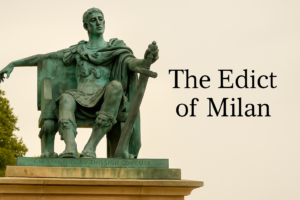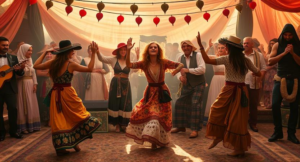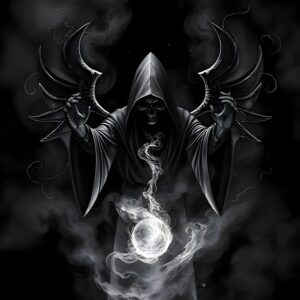Introduction
Orthodox Christianity, often referred to as Eastern Orthodoxy, is one of the oldest and most deeply rooted branches of Christianity. With its origins tracing back to the early Church, it has maintained a strong commitment to the traditions and teachings passed down from the apostles and the Church Fathers. Orthodox Christianity is known for its rich liturgical life, theological depth, and the central role of the sacraments in the spiritual lives of its adherents. This article delves into the history, beliefs, practices, and cultural impact of Orthodox Christianity.

The history of Orthodox Christianity is intertwined with the history of the Christian Church itself. After the Great Schism of 1054, which divided the Christian Church into the Eastern (Orthodox) and Western (Roman Catholic) branches, Orthodox Christianity developed independently, particularly in the Byzantine Empire. The fall of Constantinople in 1453 marked a significant shift, with Moscow emerging as a new center of Orthodoxy. Today, the Orthodox Church is composed of several autocephalous (self-governing) churches, including the Ecumenical Patriarchate of Constantinople, the Russian Orthodox Church, the Greek Orthodox Church, and others.

Orthodox Christianity is centered on the Nicene Creed, which outlines the fundamental beliefs of the faith, including the belief in the Trinity (Father, Son, and Holy Spirit) and the incarnation of Jesus Christ. Orthodox theology places a strong emphasis on the continuity of the apostolic faith, the teachings of the early Church Fathers, and the importance of maintaining the traditions and practices of the early Church.
One of the key theological concepts in Orthodoxy is theosis, or deification, which refers to the process by which humans become united with God through the grace of the Holy Spirit. This concept highlights the transformative nature of Orthodox spirituality, where the goal of the Christian life is to become more like God, participating in His divine nature.

Liturgical worship is at the heart of Orthodox Christian life. The Divine Liturgy, particularly the Liturgy of Saint John Chrysostom, is the most common form of worship, celebrated on Sundays and feast days. The liturgy is a highly structured and symbolic service, filled with hymns, prayers, readings from the Scriptures, and the celebration of the Eucharist, which is considered the “source and summit” of the Christian life.
The sacraments, or Holy Mysteries, play a central role in Orthodox Christianity. There are seven sacraments: Baptism, Chrismation (Confirmation), Eucharist, Confession, Marriage, Holy Orders, and Anointing of the Sick. Each sacrament is seen as a means of receiving God’s grace and deepening one’s relationship with Him.

Icons, or religious images, are a distinctive feature of Orthodox Christianity. Far more than mere artwork, icons are considered windows to the divine, serving as a means of communication between the faithful and the heavenly realm. They are venerated, not worshipped, and are an integral part of Orthodox worship and personal devotion. The practice of creating and venerating icons is rooted in the belief that Christ’s incarnation sanctified matter, making it possible for the divine to be represented in physical form.
Iconography is governed by strict guidelines to ensure that the images serve their spiritual purpose. Each icon is created with specific symbolism and follows traditional methods, often involving layers of symbolism and scriptural references.

Monasticism is a significant aspect of Orthodox Christianity, with monastic communities playing a vital role in preserving and transmitting the faith. Monks and nuns live a life dedicated to prayer, meditation, and ascetic practices. The monastic tradition emphasizes a commitment to spiritual discipline, simplicity, and community life.
Mount Athos in Greece is one of the most renowned centers of Orthodox monasticism, with a long history dating back to the 9th century. Monasteries on Mount Athos and elsewhere are considered spiritual havens where Orthodox asceticism is practiced and where the ancient traditions of the Church are maintained.

Orthodox Christianity has had a profound influence on the culture, art, and history of the regions where it is practiced. The architectural style of Orthodox churches, with their domed roofs and intricate mosaics, reflects the movement’s emphasis on the divine and transcendent. Orthodox music, including the Byzantine chant, contributes to the distinctive atmosphere of Orthodox worship.
The teachings of the Orthodox Church have also influenced social and cultural norms in Orthodox-majority countries, shaping values related to family life, community, and morality. Festivals and religious celebrations, such as Pascha (Easter) and the Feast of Theophany, are integral to Orthodox life, marking the rhythm of the liturgical calendar and fostering a sense of community and continuity.

In the modern world, Orthodox Christianity faces various challenges, including secularism, declining religious observance, and the need to address contemporary social issues. Despite these challenges, the Orthodox Church continues to adapt and engage with modern society while striving to preserve its ancient traditions.
The Orthodox Church has made efforts to engage with broader ecumenical movements, dialogue with other Christian denominations, and address social and humanitarian issues. It remains a vibrant and active presence in the global Christian community.
Conclusion
Orthodox Christianity stands as a testament to the enduring power of tradition and faith. Rooted in the early Church’s teachings and practices, it continues to offer a rich and meaningful spiritual path for millions of believers. Through its liturgical life, theological depth, and cultural contributions, Orthodox Christianity preserves the ancient faith while navigating the complexities of the modern world.







